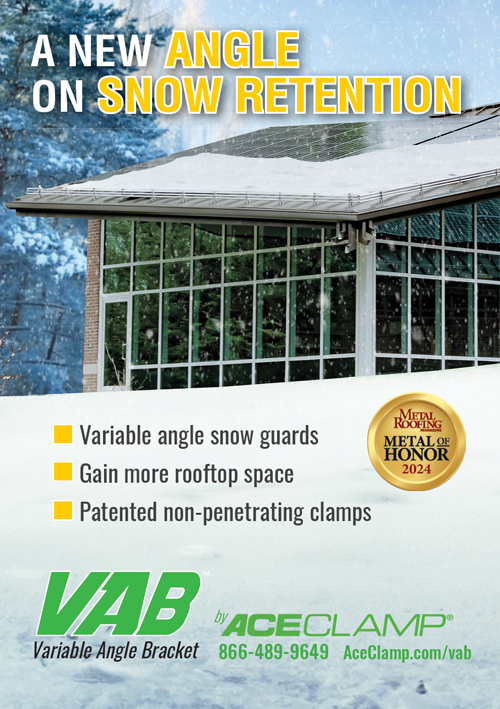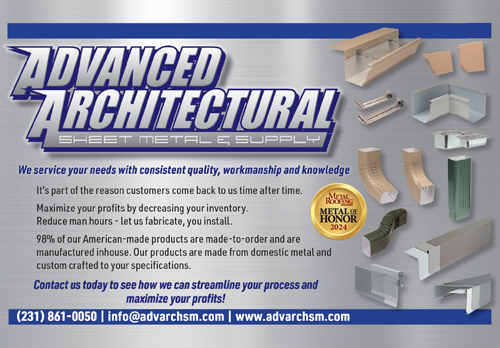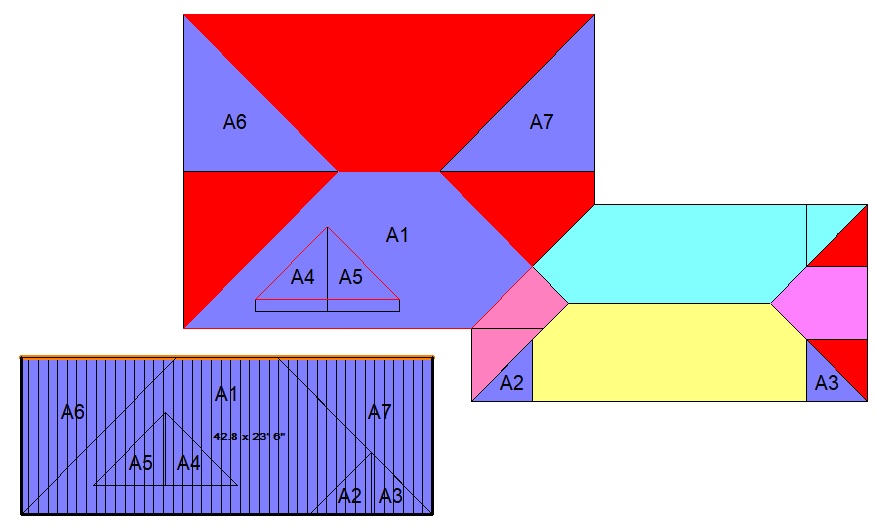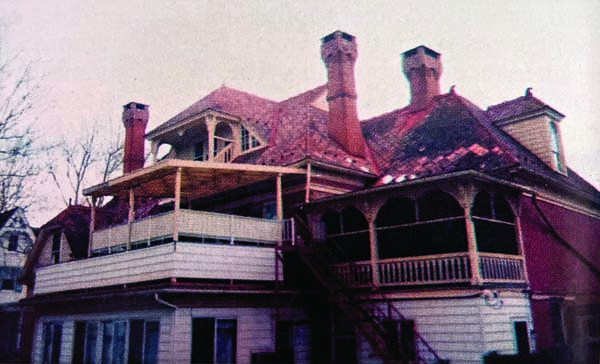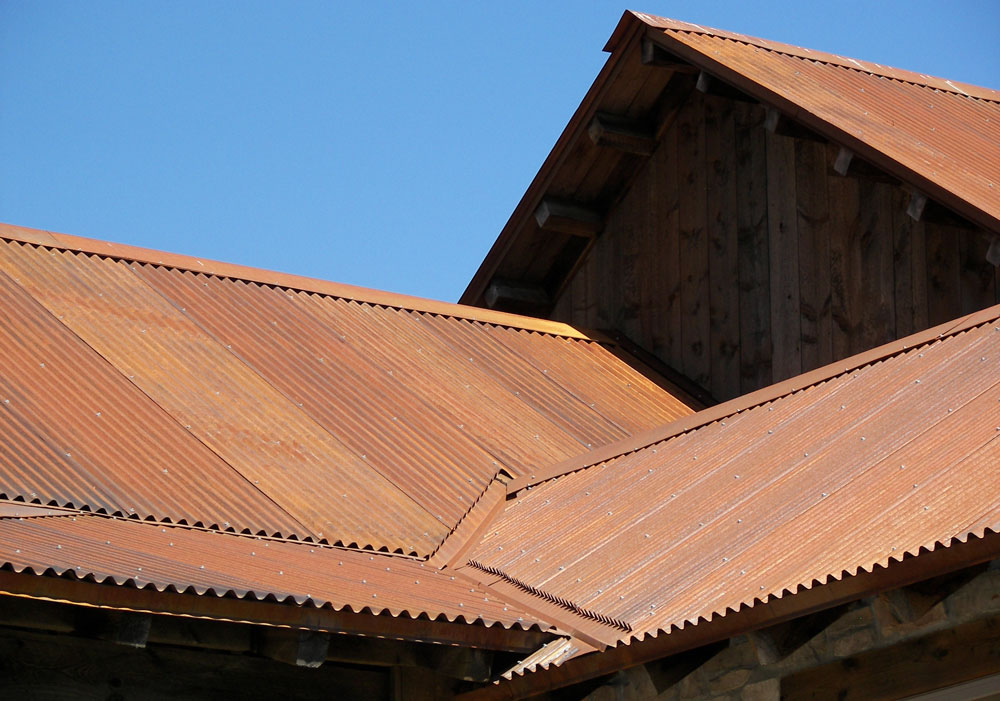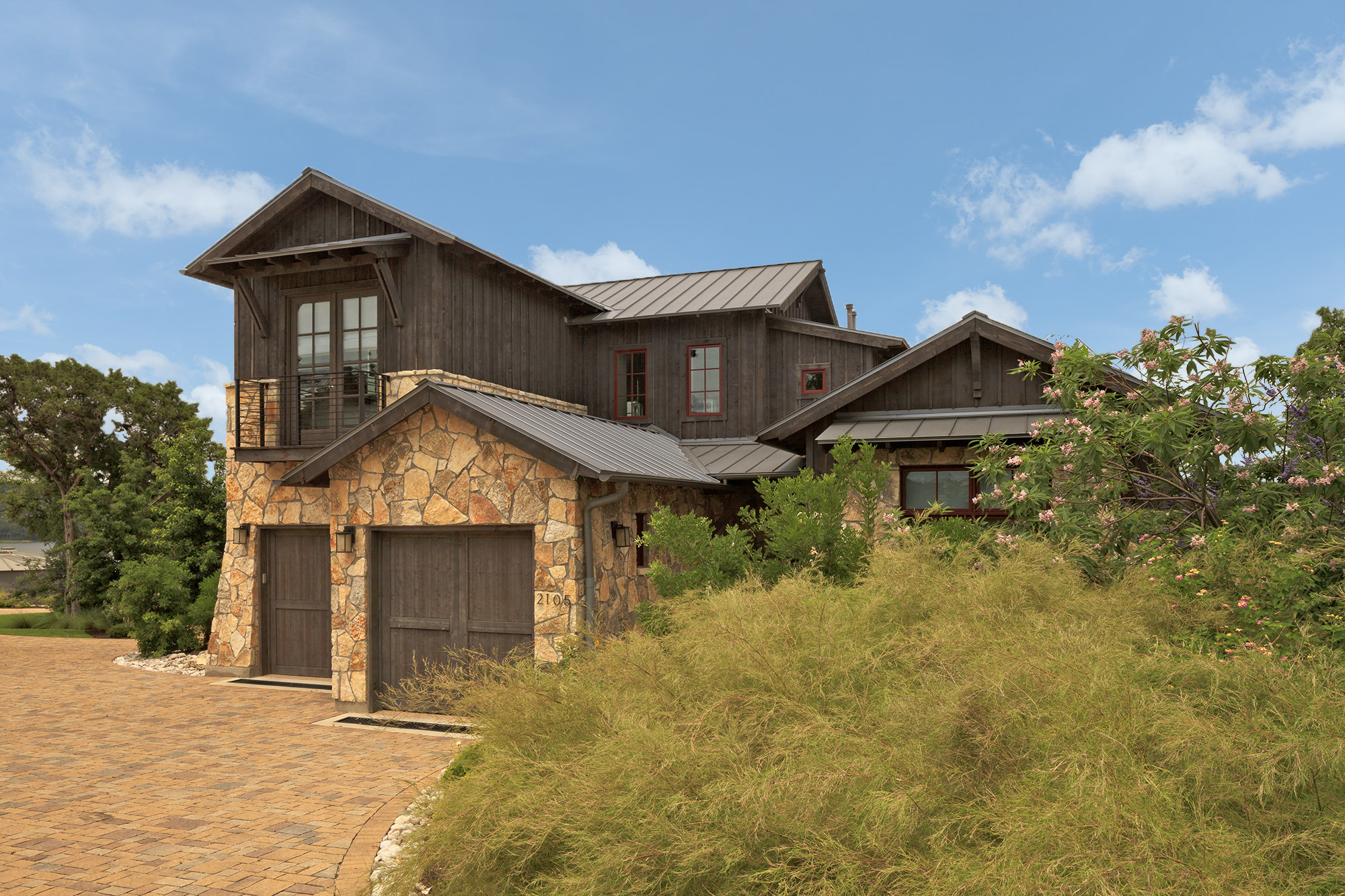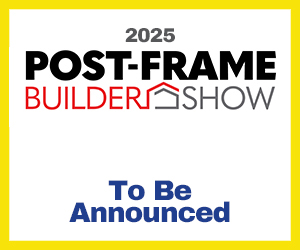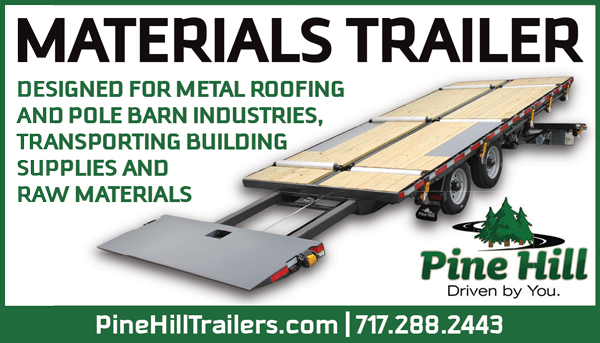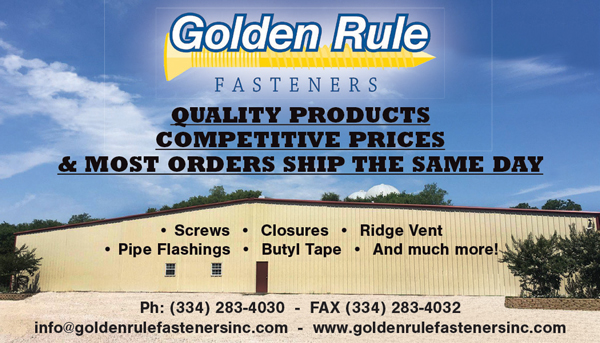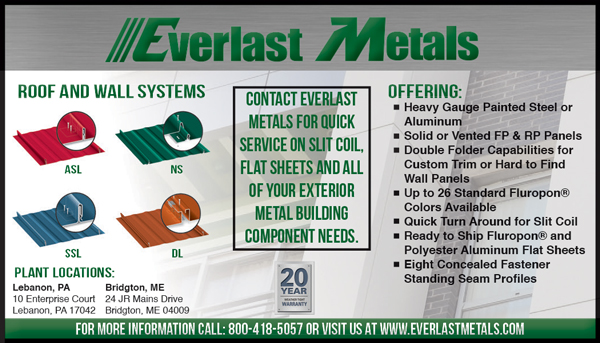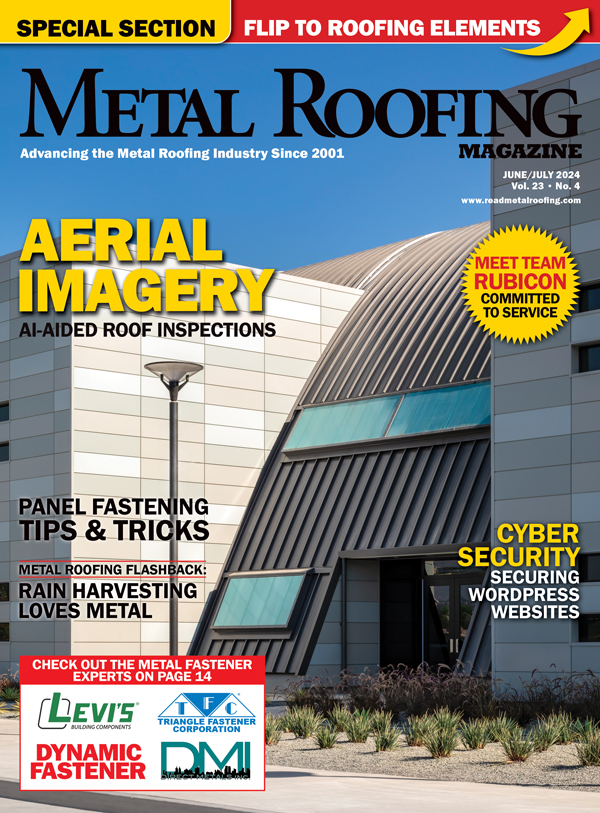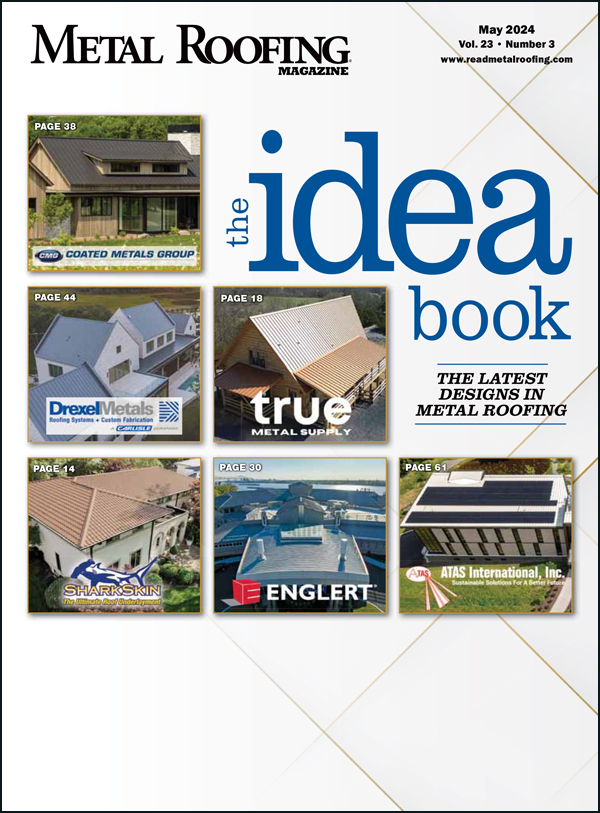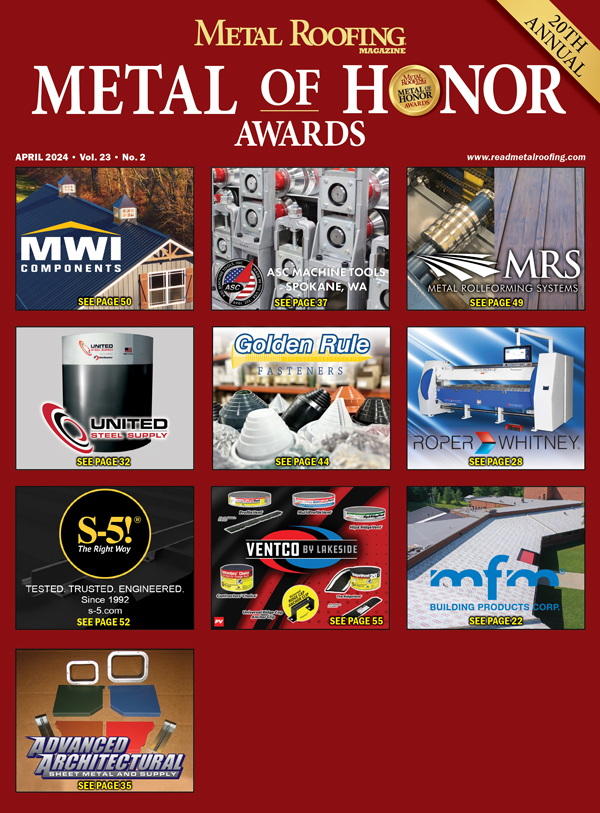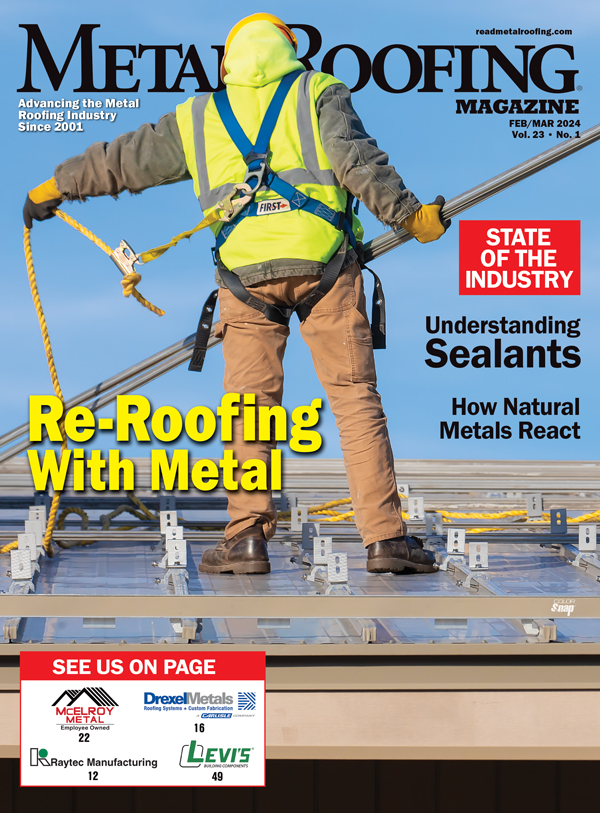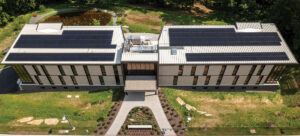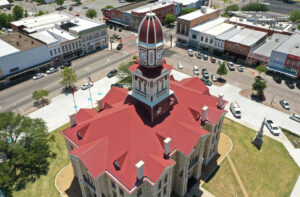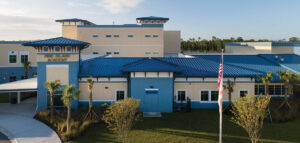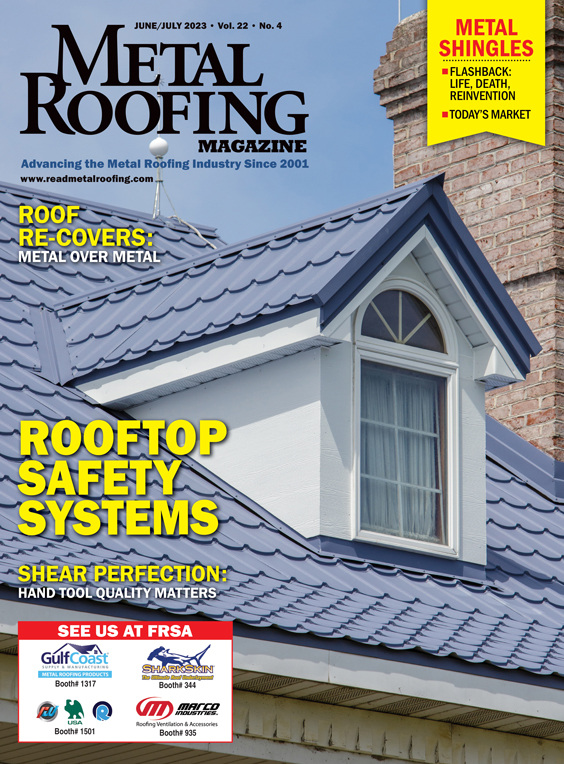By Tony Bouquot
Metal is a marvelous tool, especially for those design and construction experts with the savvy to wield it optimally. In the roofing industry, the use of metal panels and shingles fuels creative energies while improving safety for installation and maintenance items.
Further, when you consider the future needs of clients, the long service life and low-maintenance attributes of metal roofs just make sense. In this article, subject matter experts share some key reasons why aesthetic versatility and longevity are invaluable to the architectural professionals who crave innovative, forward-thinking roofing solutions.
Aesthetic Versatility Adds Curb Appeal
The design opportunities for metal roofs are abundant. From traditional to contemporary, metal roofing adds distinction to architectural styles. Plus, it can be stamped into many shapes. Because metal is lightweight and malleable, it can be bent and curved without sacrificing strength or integrity. The malleable nature is a major advantage when working with unique or challenging building forms.
“Metal is a highly refined material that you can get a nice, sharp edge from,” says Wayne Jenski, an architect and enclosure specialist at Dekker/Perich/Sabatini. He notes one higher education project where his team blended the metal roof and wall forms so that the entire building is viewed as one uniform object. He adds, “I like having the ability to transition from an exterior wall to a roof assembly fairly seamlessly and cleanly. Contemporary architecture often likes to blend those.” The panels typically interlock with hidden fasteners.
While copper, zinc, and aluminum are common choices for roofs, steel is by far the most popular option. Additionally, steel can be coated with either zinc (galvanized) or a mixture of aluminum and zinc to increase its durability. Steel is highly recyclable (a big perk to sustainability enthusiasts) and also noncombustible, with a Class A fire rating that can lower insurance costs and reduce building code restrictions. Paint tones and texture options also provide a canvas for creativity, and high-quality coatings can help metal panels maintain vibrance for long periods of time. Additionally, specially formulated “cool pigments” can boost the solar reflectance capabilities of metal roof colors (even darker hues) to make buildings more energy efficient.
A standing seam metal roof (SSMR) can be designed with a low slope or be highly visible with a steep slope — adding distinctive property appeal. The roof panels can also be used for mansards, fasciae, and similar applications.
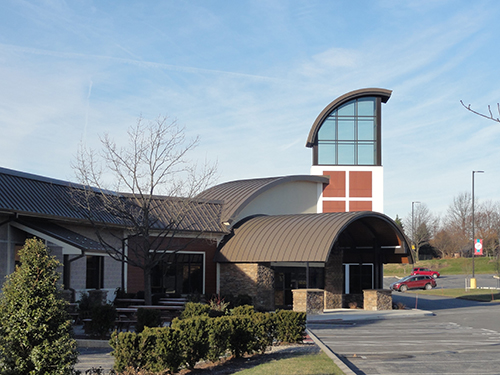
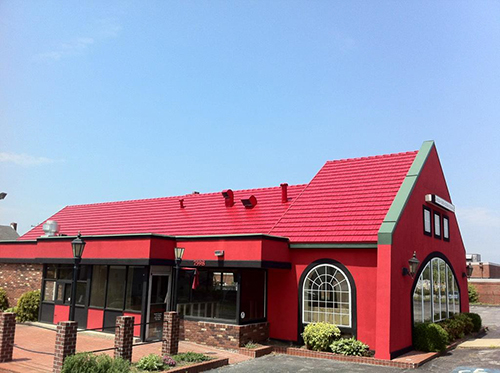
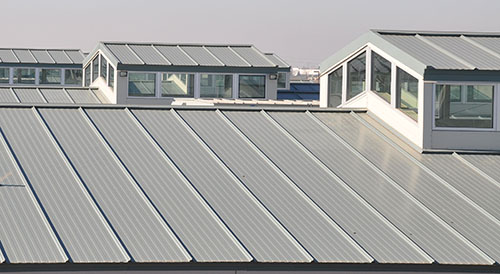
Metal’s Better Return On Investment
“Standing seam metal roofs are in great demand right now,” explains Eric Vesel, co-owner of Vesel Contractors. “These systems look great because they have simple, clean lines, and they can be finished in different styles and configurations — and the panels have many options for width.” In recent years, the Wisconsin-based company has seen an increase in metal roofing projects in both residential and commercial applications. This trend, Vesel says, is due to the longevity and warranty advantages afforded by metal roofing products, in addition to their modern, stylish appearance.
With clients’ budgets in mind, many design professionals gravitate toward low-maintenance, cost-effective roofing solutions. Metal roofs fit this category because they do not support mold growth, are impervious to insect damage, and will never rust or decay when properly prepped and installed. Advanced coating technologies, in particular, can expand a metal roof’s waterproofing, anti-rust, and ultraviolet (UV) protection capabilities.
“Many of our projects are funded with tax dollars — public schools are a good example — so it’s critical that we represent the public’s interests when making design decisions,” Jenski shares. “Long service life and low maintenance typically mean a better return on the investment due to a lower life cycle cost. Depending upon the project circumstances, metal roofs could fit that criteria very well.”
When considering the life cycle costs of a roof, SSMRs have proven economical, especially when compared to conventional roofing systems. The Metal Building Manufacturers Association’s (MBMA’s) engineering team, as well as researchers from other leading associations and universities, have extensively studied the extended service life of SSMRs — affirming a life cycle of 60 years or more.
Insulated Metal Panels Aren’t Just for Metal Buildings
Architects also tell us that SSMRs often are preferred because they are engineered to accommodate contraction and expansion caused by temperature fluctuations. This attribute protects against roof leaks and increases interior comfort levels for building occupants.
Today, more than 2 billion square feet of SSMRs are installed annually, underscoring the system’s popularity. Furthermore, standing seam roofs provide an excellent platform for solar panels, which can be easily attached to the roof seams using non-penetrating clamps.
Continuous innovation is essential to improve roof performance. Insulated metal panels (IMPs), often used to construct the walls and roofs of metal building systems, offer extremely high thermal resistance (R-value), particularly when integrated with a closed-cell urethane foam insulation core. IMPs are very popular in Europe, where they are used on about half of all new commercial and industrial structures. They are steadily gaining traction in the U.S. due to a growing awareness of their ability to stabilize and control interior environments.
“We’ve specified these products on a number of projects where a metal roof system is appropriate,” says architect Gary Henry, a principal at Hunt EAS. “It achieves everything — you get your desired R-value in the system, your air vapor barrier and it’s a good material that’s going to last for decades.” Certain IMPs are capable of performing above R-50, which can amount to up to two-thirds less energy consumption in a typical existing structure. Furthermore, they have significant spanning and load-bearing capabilities, making them easier to integrate into building designs.
Safety’s Role in the Evolving Roofing Industry
The wide-ranging benefits of metal is continuing to drive growth in all sectors of the roofing industry. The implementation of tariffs on foreign goods is revitalizing American steel mills, making metal more competitive with the petroleum-based asphalt shingles. Continued advancements in protective finishes and design standards means that metal roof systems are becoming more desirable in harsh environments — including caustic factory settings, coastal areas exposed to corrosive saltwater and shearing winds, dry regions susceptible to wildfires, and cold climates subject to heavy snows and ice accumulation.
With metal roofs being constructed more frequently, safety is a chief focus for the professionals who install and maintain them. “Fall hazards, as well as cuts and abrasions, are two main safety issues our industry deals with,” says Mike Edgell, metals operations manager for CentiMark Corporation, the largest commercial roofing contractor in North America. Fortunately, roofing safety equipment and gear are continuing to improve. “The advancements in fall protection have come a long way,” he adds, “especially in recent years. The harnesses are getting more comfortable, and your tie-off points are getting easier to install. Cut-resistant gloves are also adding comfort for the teams handling metal materials and screws; it’s a constant battle to keep their hands protected.”
Vesel chimes in: “We like to use standing seam metal brackets to make construction safer for our workers. We clamp the brackets onto the sides of standing seam panels, then place wood between them so that the workers can walk up the roof and provide maintenance to specific sections more safely and efficiently. Specialized cutting tools are also a lifesaver during installation. They help you notch, cut and hem the metal panels at eaves, hips and valleys with greater precision and ease, and help you avoid certain safety hazards encountered with tools like hand snips.”
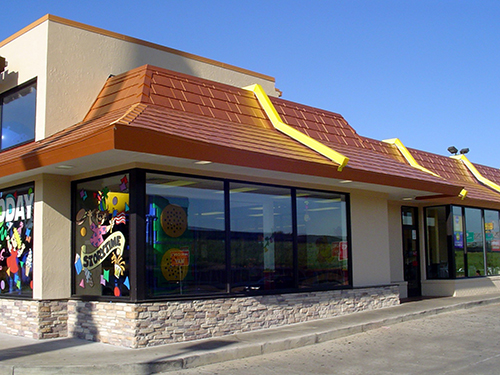

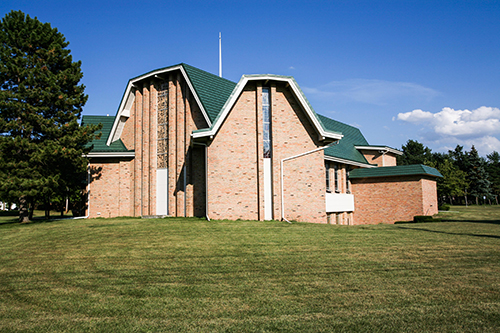
Forward-Thinking Safety
Many customers are also asking roofing contractors to install permanent fall protection systems for maintenance crews, HVAC specialists, plumbers, and others to use later on. There are a variety of freestanding and non-penetrating fall protection products available — such as freestanding guardrails, skylight screens, platforms that eliminate trip hazards and permanent lifeline systems — all of which can be added to both new and existing roofs.
“Metal roofs are an ideal platform for installing permanent safety systems, especially standing seam,” Edgell says. “You can install tie-off points straight to the highs, with clamps that don’t affect the longevity of the roof. This is especially important on floating systems where the metal has to expand and contract.”
Above all, a company’s safety program is vital to ensuring workers stay protected. “It’s definitely the best tool you can have,” Edgell emphasizes. “We have a department full of dedicated safety specialists who are always accessible to the crews, and who work out safety concerns before projects even start. They train our employees on a regular basis — from our laborers all the way up to our executives.”
“Preventing falls from heights should always be one of the highest priorities during any roofing project,” adds David Weatherford, safety committee chair for MBMA. “There are no excuses for a safety manager to not protect his or her workers, given the easy access to OSHA’s 1926 regulations. There are two valuable resources companies can utilize: the OSHA Directives (which inform safety personnel of the policies and procedures for inspections) and the equally important Letters of Interpretation. The latter are often not directly answered, but they do give valuable advice for questions arising from implementation.”
Conclusion
MBMA is strongly committed to every company having a comprehensive safety program and recognizes members annually through its safety awards program. “We are committed to promoting workplace safety and these awards recognize those companies that set an example for all of us,” says Jennifer Oblock, account executive for MBMA. “For our Building Systems members in 2018, 42 plant facilities participated in MBMA’s Quarterly OSHA Injury Statistics Program, logging nearly 12 million hours on the job. Our Associate member awards program, enacted in 2017, extends the focus on safety across the industry to our suppliers’ manufacturing facilities as well.”
“Safety training is the best insurance for keeping employers and employees safe and in business,” Weatherford adds. “To support these initiatives, MBMA offers a variety of safety resources that industry professionals can utilize, including a Metal Roofing Systems Design Manual available in both print and digital format.” For access to MBMA’s suite of technical design guides, visit www.mbmamanual.com.
About the Author: Tony Bouquot is the General Manager of the Metal Building Manufacturers Association. He can be reached at 216.241.7333 or [email protected].


